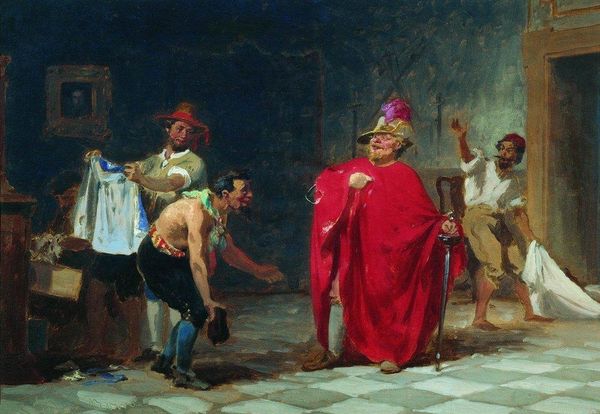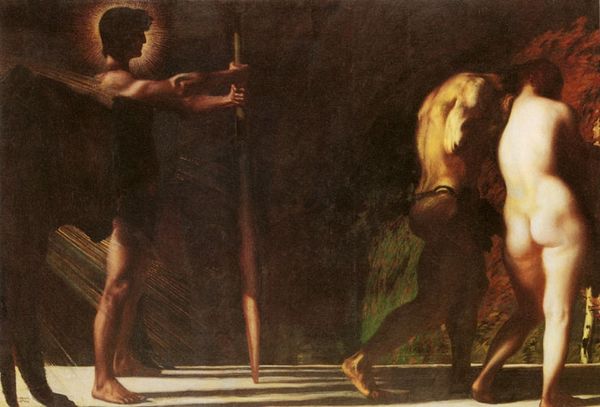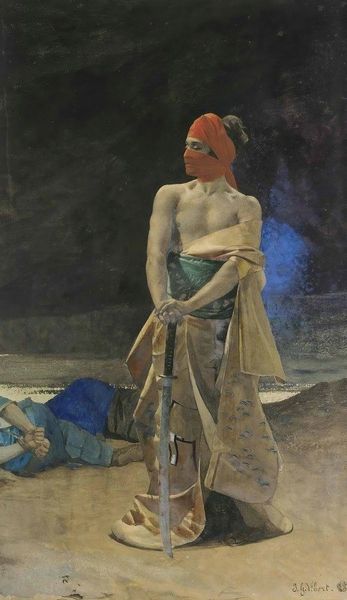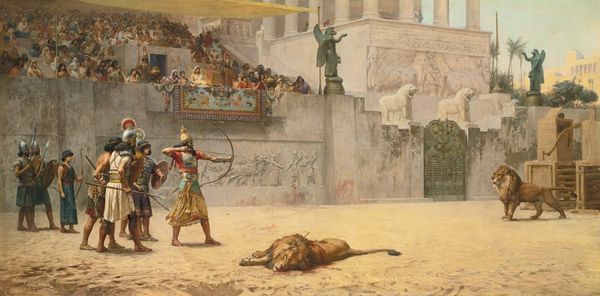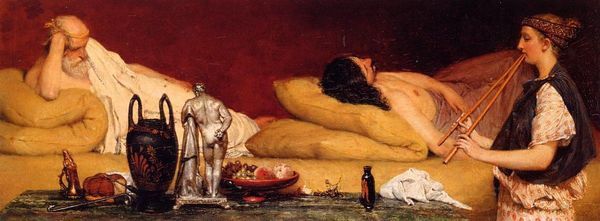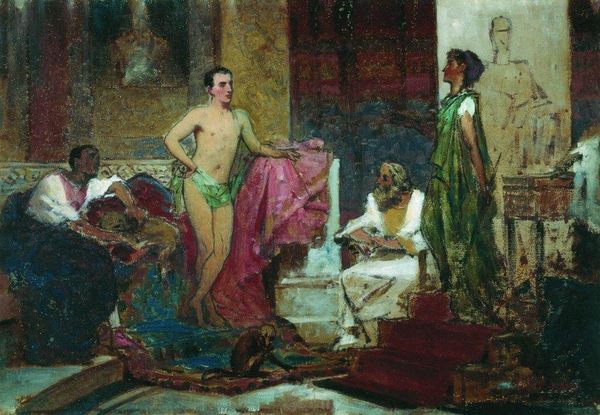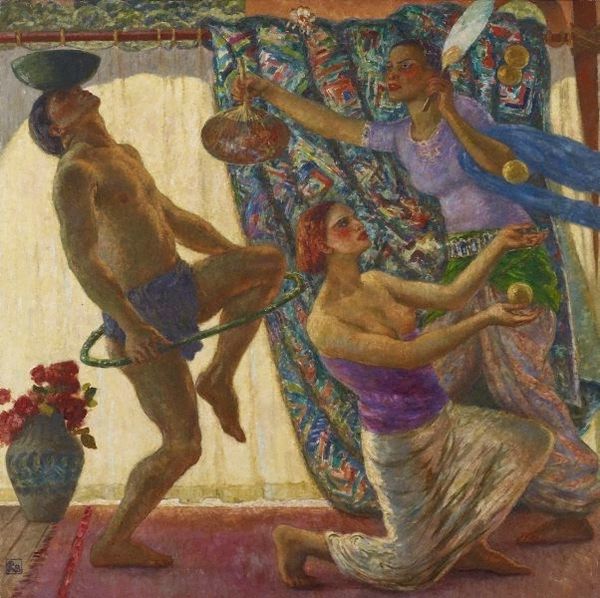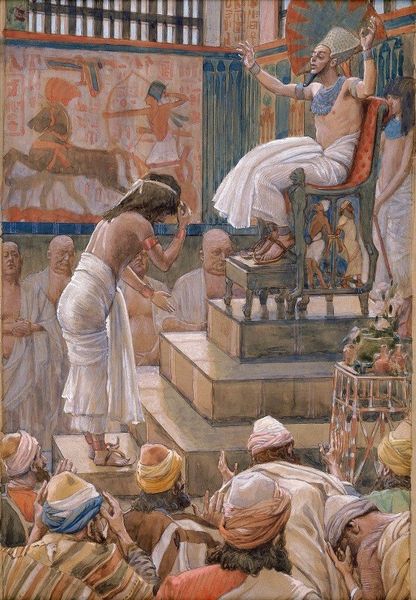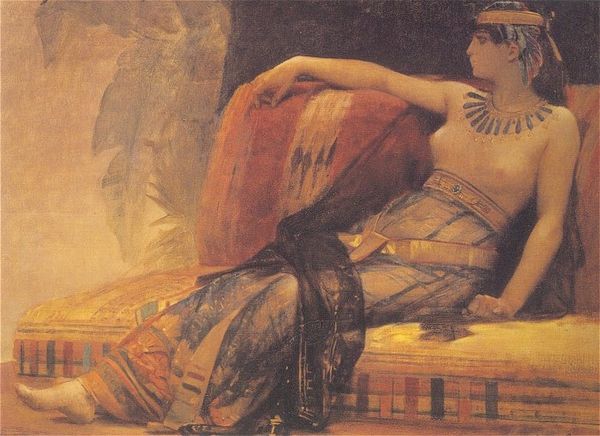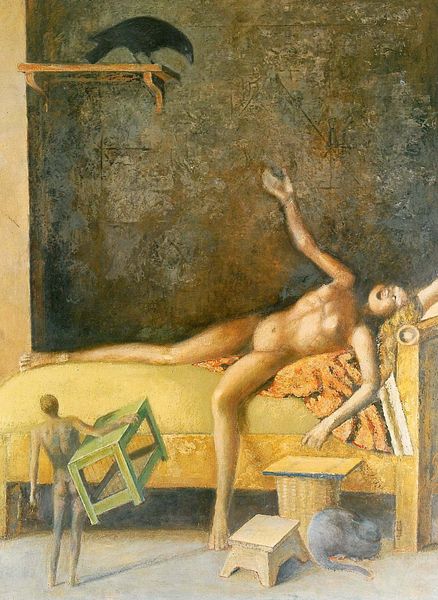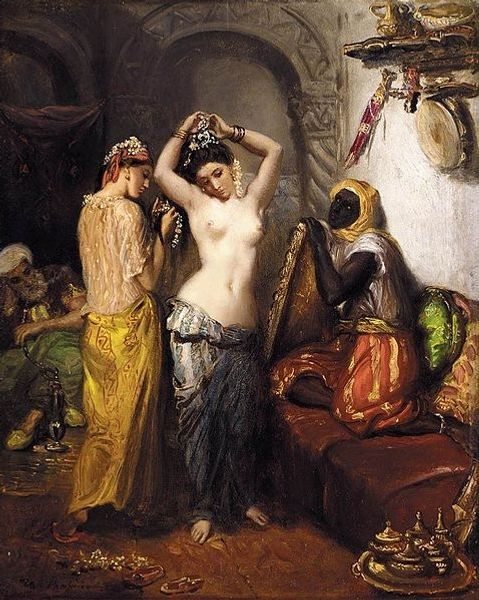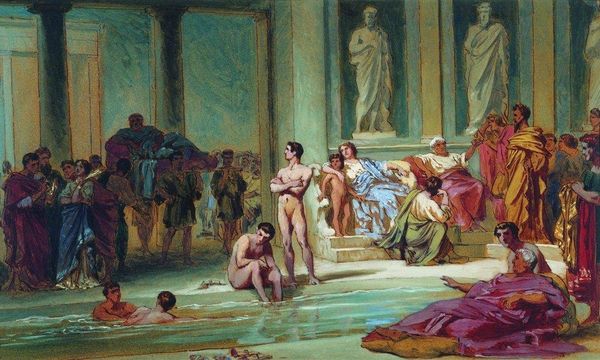
Dimensions: 24.6 x 33 cm
Copyright: Public domain
Editor: Bronnikov's "The Dying Gladiator," painted in 1856 using oil paints, throws us right into the thick of it. There’s so much raw emotion – it feels intensely dramatic. What do you make of it? Curator: It sings to me of history, you know? But beyond just the depiction of a Roman spectacle, I sense Bronnikov's weaving a narrative about human vulnerability, about mortality. It's got that dramatic flair characteristic of Romanticism mixed with Classicism’s idealized forms. Look at the contrast – the victor stands powerful and almost statuesque, and the loser collapses… a poignant tableau vivant if ever there was one. How does that juxtaposition strike you? Editor: That makes sense. I initially focused on the sheer drama, but your point about vulnerability adds so many layers. Do you think that Bronnikov was making some kind of political comment too, through the figure of the gladiator? Curator: Absolutely possible. Consider the era, Editor. Russia was in the midst of profound social changes, and artists often used historical narratives to reflect on contemporary issues. This dying gladiator could well be a symbol for lost freedoms or a critique of autocratic power. Though, let’s not forget it was erotic-art too. That vulnerable pose...it’s hard not to think there was a sense of power there too! Editor: I see it now. It is amazing that a single image can encompass such complexity of ideas and… well, *feels*. Thanks for helping unpack this. Curator: It is art, isn't it? It's always speaking if we only lend an ear.
Comments
No comments
Be the first to comment and join the conversation on the ultimate creative platform.

